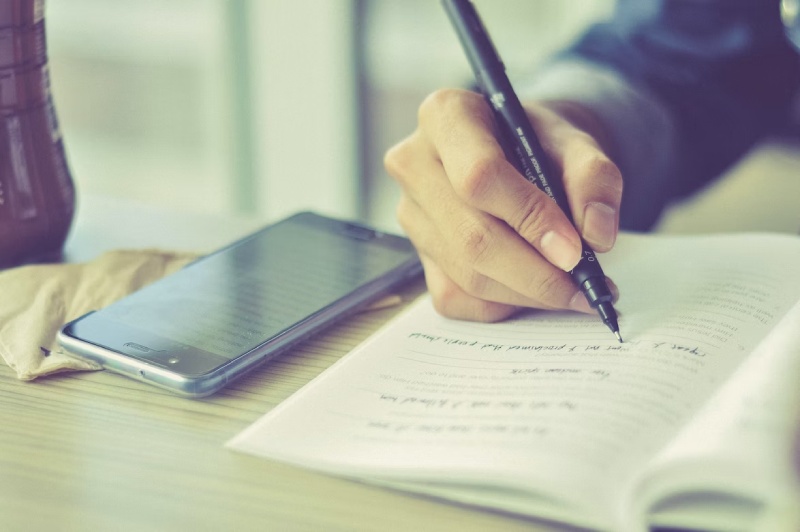Lifestyle
How to Detect Mistakes When Writing Your Paper?

So, you’ve poured your heart and soul into that research paper, meticulously crafting each paragraph and weaving your thoughts into a coherent tapestry of words. You’ve danced with your keyboard, wrestled with your thoughts, and finally emerged victorious with your masterpiece. But wait, before you hit that print button or send it off into the digital realm, have you thoroughly checked for mistakes? We’re not just talking about the run-of-the-mill typos – we’re diving into the depths of the paper to ensure it’s as flawless as a unicorn sipping tea with Bigfoot. Let’s embark on this journey of error detection and correction together!
- The Eagle-Eyed Read-Through
Imagine you’re a detective, inspecting every nook and cranny of your paper for inconsistencies and slip-ups. A good old read-through can work wonders. Not just any read-through, though – channel your inner Sherlock Holmes and approach it with fresh eyes. Don’t be the writer; become the reader. This perspective shift can make those mistakes pop like confetti.
- Friends Are Gold
Here’s a fun experiment: send your paper to a friend and ask them to dissect it like a biology class frog. Fresh pairs of eyes, especially ones not marinating in your paper’s juices, can spot mistakes you’ve grown blind to. Maybe they’ll catch that time you accidentally called Shakespeare a time-traveling bard.
- The Unstoppable Spell-Check
Ah, the ever-faithful spell-check, the unsung hero of error detection. But hey, don’t just rely on that default tool – modern software even helps you correct grammar, suggests synonyms, and sometimes feels eerily psychic.
- Read It Backward!
No, we’re not advocating some mystical ritual here. Reading your paper backward, sentence by sentence, can be an excellent trick to catch errors that might otherwise escape your attention. It’s like looking at a Jackson Pollock painting from different angles – the mistakes stand out, waving their tiny red flags.
- A Date With Formatting
Formatting can be a sly trickster, making words jump around like caffeinated kangaroos. Check that your fonts are consistent, your headings are aligned, and your paragraphs aren’t doing the electric slide all over the page. A well-formatted paper not only looks professional but also communicates clarity.
- Befriend the Grammar Guides
Grammar can be your friend, even if it’s that slightly finicky friend who always corrects your pronunciation. Resources like Grammarly or style guides can be invaluable companions. They’re like seasoned editors who whisper suggestions in your ear, making sure your sentences dance in harmony.
- The Power of Silence
Now, let’s talk about a mistake-detection technique that’s as ancient as the mountains: silence. Take a break from your paper – let it breathe, and let your brain disentangle from the word maze. When you come back, it’s like meeting an old friend after a vacation – mistakes suddenly jump out, begging for correction.
- Get Professional Help
Sometimes, the mistakes might be deeply rooted, lurking beneath the surface like a well-crafted mystery novel. If you find yourself struggling to see the forest for the trees, don’t hesitate to seek help from academic ghostwriting services. These expert wordsmiths specialize in untangling intricate narratives and polishing your paper to brilliance.
- The Rogue Commas and Sneaky Semicolons
Punctuation marks can be tricksters. A comma can turn your sentence into a labyrinth of confusion, while a semicolon might just be the bridge that leads to grammatical disaster. Double-check your punctuation, and if you’re unsure, don’t hesitate to consult the wise oracle of grammar rules.
- The Mysterious Case of Homophones
Homophones are like word doppelgängers – they sound the same but have entirely different meanings. It’s easy to fall into their cunning traps. Imagine writing “their” instead of “there” or “your” instead of “you’re.” To avoid this pitfall, run a quick scan for these troublemakers.
The Final Reckoning
You’ve polished your paper to a shine, but before you declare victory, indulge in a final ritual: the backward reading. Start from the last sentence and work your way up. This disorienting twist unravels the flow you’ve grown accustomed to, enabling you to spot errors that might have otherwise eluded you.
Remember, you’re not alone in this quest for error-free excellence. Seek the wisdom of a fellow writer or a friend who can cast a fresh gaze upon your creation. Their insights can unearth hidden gems of improvement that elevate your paper to new heights.
***
Terrylin Nix is a dedicated student-life raconteur, weaving her words to illuminate the intricate tapestry of academic adventures. With an inquisitive mind and a penchant for heartfelt storytelling, she delves into the highs and lows, the laughter and struggles that shape the student experience. Join Terrylin as she embarks on a literary journey through the hallowed halls, capturing the essence of learning, growth, and discovery.
-

 Sports4 weeks ago
Sports4 weeks agoAl Ahly vs Inter Miami, 2025 FIFA Club World Cup – Preview, Prediction, Predicted Lineups and How to Watch
-
Health3 weeks ago
Back to Roots: Ayurveda Offers Natural Cure for Common Hair Woes
-

 Tech3 weeks ago
Tech3 weeks agoFrom Soil to Silicon: The Rise of Agriculture AI and Drone Innovations in 2025
-

 Startup4 weeks ago
Startup4 weeks agoHow Instagram Is Driving Global Social Media Marketing Trends
-

 Science5 days ago
Science5 days agoJuly Full Moon 2025: Everything You Should Need to Know, When and Where to See Buck Moon
-

 Sports3 weeks ago
Sports3 weeks agoFIBA 3×3 World Cup 2025: Full Schedule, Preview, and How to Watch
-

 Gadget3 weeks ago
Gadget3 weeks agoThings to Know about Samsung Galaxy S26: What’s New and What’s Next
-

 Sports4 weeks ago
Sports4 weeks agoWorld Judo Championships 2025: Full Schedule, Date, Time, Key Athletes and How to Watch

























